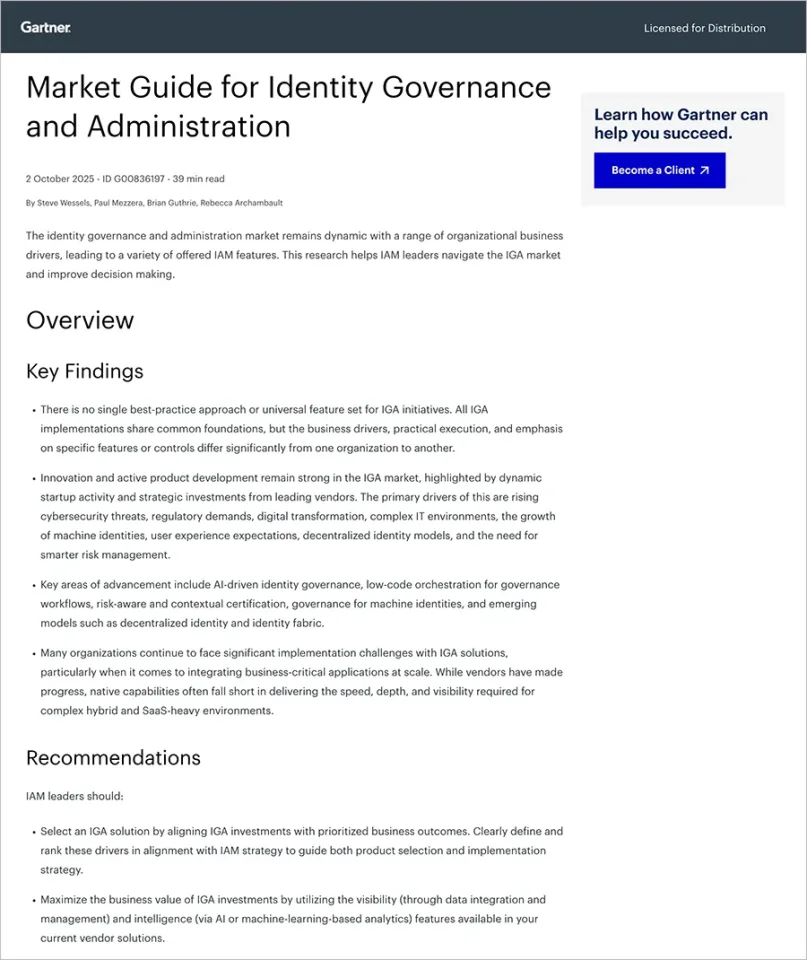In today’s cybersecurity landscape, Application Access Certifications are not just beneficial, but they are absolutely essential for any organization. However, many organizations struggle with time-consuming certification processes that require significant resources. The key to success is to find a balance between efficiency and effectiveness. In this article, we’ll reveal seven actionable strategies that you can implement to streamline your application access certification process. By doing so, you can ensure not just compliance but also a stronger defense against potential data breaches.
1. Automate and Centralize Access Reviews
Manual access reviews can be time-consuming and error-prone. Automating the access certification process can significantly reduce the time required for certification while maintaining accuracy. By centralizing access reviews through dedicated software solutions, organizations can:
- Schedule Regular Reviews: Set up automated access reviews based on predefined intervals or trigger events, ensuring that reviews are conducted consistently.
- Implement Role-Based Certification: Assign users with specific roles to review and validate access for others in their department or team. This distributes the workload and increases accuracy.
- Send Notifications and Escalations: Automated notifications and escalations remind reviewers of pending certifications and ensure timely completion.
2. Implement Risk-Based Certification
Not all applications and systems pose the same level of risk. By adopting a risk-based approach to access certifications, organizations can prioritize resources where they are needed most. Here’s how to go about it:
- Focus on Critical Applications: Concentrate efforts on applications that store or process sensitive data, are business-critical, or have a history of vulnerabilities.
- Analyze User Behavior: Leverage user behavior analytics to identify high-risk users or unusual access patterns, directing certification efforts toward potential security threats.
3. Leverage Role Engineering
Role engineering involves creating well-defined, standardized roles that encompass specific job functions. By employing role engineering, organizations can:
- Minimize Complexity: Reduce the number of unique roles by creating broader, more comprehensive roles that cover multiple job functions.
- Streamline the Review Process: When roles are well-defined, access certifications become more straightforward as reviewers can quickly assess access against predefined roles.
4. Incorporate Machine Learning and AI
Machine learning and artificial intelligence can help organizations enhance the efficiency and effectiveness of access certifications with:
- Predict Access Reviews: Use machine learning models to predict which access rights are likely necessary for specific roles, aiding in the certification process.
- Detect Anomalies: Deploy AI to identify unusual access patterns or deviations from the norm, flagging potential security breaches or unauthorized access.
5. Provide Self-Service Access Requests
Empower users to manage their access rights through self-service portals, reducing the burden on IT departments and streamlining the certification process:
- Enable Access Requests: Allow users to request access to applications, which can then be reviewed and approved by relevant managers or reviewers.
- Facilitate User Access Reviews: Empower users to review their own access and validate its appropriateness, reducing the workload on reviewers.
6. Integrate Certification with Identity Governance
Integrating access certifications with identity governance systems can streamline the process and enhance the effectiveness of access reviews:
- Utilize Unified Platforms: Employ integrated platforms to manage user identities, access permissions, and certifications in one place, simplifying the overall process.
- Achieve Cross-Platform Visibility: Secure a comprehensive view of user access across various applications, enabling more accurate and informed certifications.
7. Audit-Driven Continuous Improvement
Periodically assess the efficiency and effectiveness of your access certification process and implement improvements based on the findings:
- Maintain Audit Trails: Keep detailed records of access reviews, actions taken, and results to ensure transparency and facilitate future audits.
- Gather Feedback: Collect insights from reviewers and stakeholders to identify pain points and areas for improvement.
Optimize Your Access Certifications with Pathlock
Striking the right balance between efficiency and effectiveness in application access certifications is crucial for modern organizations. This is where Pathlock Application Access Governance (AAG) can help. By automating, centralizing, and optimizing the certification process, organizations can reduce the time required for user access reviews while enhancing the accuracy and impact of their efforts.
Implementing risk-based approaches, leveraging technology, and fostering reviewer efficiency are key steps towards achieving this balance. Ultimately, an organization’s commitment to efficient and effective access certifications not only ensures regulatory compliance but also reinforces its cybersecurity posture and protects the trust of its stakeholders.
Get in touch with us today to learn how our Certifications module enables you to save time and cost by leveraging automation and cross-app capabilities.



